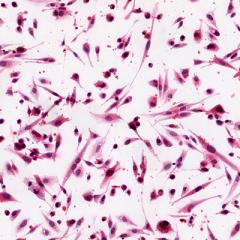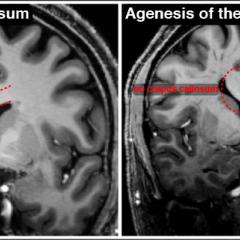What causes childhood developmental brain disorders?
Developmental brain injury and disorders (DBD) occur prior to birth or in early childhood. They may be caused by genetic factors or can be brain injuries acquired through exposure to environmental factors (such as fetal alcohol spectrum disorder, infection, physical brain injury or drug addiction in the mother). DBD commonly affect the person throughout their entire lifetime and symptoms fall on a spectrum from high-functioning children and adults, to more mildly or severely affected individuals with intellectual disability and a variety of other common symptoms.
Living with a brain disorder
Children and adults with DBD may have one or more symptoms that include learning difficulties, language and reading difficulties, problems with concentration and attention, sensory deficits, impaired memory and recall, problems with social situations and emotional processing. Additional problems can involve epileptic seizures and motor deficits such as cerebral palsy.
Some children born with DBD can also have defects in other organ systems as part of a syndrome. Often, such defects in other organ systems can be life-threatening, and therefore the majority of clinical care is directed at managing those symptoms. However, once the life-threatening situation is controlled, it is the brain disorder that will most often affect the person’s quality of life. Many people with DBD can have autism or suffer social isolation and loneliness. There is also a high incidence of mental health issues such as severe anxiety and depression. Other mental illnesses such as schizophrenia and bipolar disorder are now also thought to be caused by alterations in brain development.
The burden of DBD is heavy, with significant costs to individuals, their families/carers and society. Earlier identification and intervention will lead to improved outcomes for affected children and their families.
The importance of early diagnosis
The formation of the human brain is a complex multi-stage process involving early patterning and cellular events, as well as circuit formation and refinement. Each aspect of development is regulated by the expression of multiple genes. In some instances during this process, brain development can be disrupted by either hereditary mutations in one or more genes (inherited from a parent), de novo mutations in a gene (an alteration in a gene that is present for the first time in one family member) or an environmental cause affecting the in-utero environment and health of the mother. These include inadequate oxygen levels, bacterial or viral infections and exposure to harmful substances during pregnancy that can cause brain injury.
DBD may occasionally be detected during pregnancy by using ultrasound or advanced imaging techniques, but are often diagnosed after birth using brain MRI or through behavioural assessment (measures of developmental milestones). Unfortunately, at present, an imaging diagnosis made during pregnancy may be of limited value to families or clinicians, due to the difficulties in understanding the full extent of the brain pathology and predicting the long-term outcome for the child, or in modifying the pregnancy outcome.
A large number of developmental processes and a multitude of genes are involved at each stage of brain development. More than 300 syndromes have been described as DBD that are associated with changes in brain wiring. Over 50% of these have no known cause, but early diagnosis and intervention could make a significant difference to the outcome for the child if they are identified.
There is a pressing need to develop better diagnostic tools for DBD. Accurate diagnoses will improve understanding of the underlying causes and provide a means to develop accurate genetic testing, counselling and, ultimately, effective therapies for DBD
50% of developmental brain disorders that effect brain wiring have no known cause.
Common symptoms of brain disorders
Common signs and symptoms of developmental brain disorders can include the following:
- Corpus callosum malformation
- Difficulties with language development and reading
- Epilepsy
- Visusl and/or heaing impairment
- Motor impairment (abnormal movement or delayed movement milestones)
- Intellectual delays
- Learning difficulties
Autism and ADHD may also be associated with developmental brain disorders.


